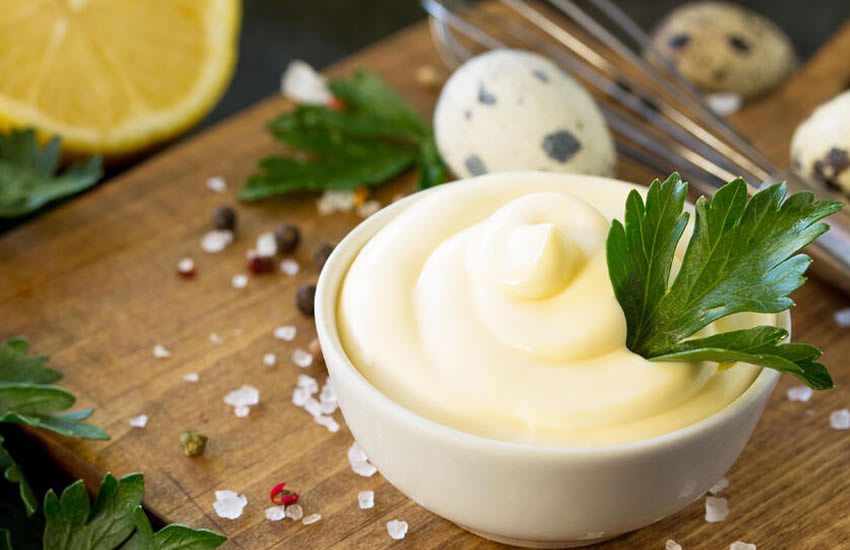The origin of the word “mayonnaise” in French is unknown.
Larousse Gastronomique 1961 is of the opinion that the word comes from the Old French moyeu, which meant, among other things, yolk.
Many products that we are used to seeing on our table every day are not as simple as it may seem at first glance and have a very interesting history.
One of such truly “people’s” products is mayonnaise, which entered our everyday life with the light hand of Comrade Stalin in a grocery set issued by cards. Meanwhile, mayonnaise has the most noble origin.French cuisine is inextricably linked with the use of more than three thousand sauces.
By tradition, sauces were named after the inventors or the locality and people to whom the French attributed these culinary traditions.This is how Tatar sauce (mayonnaise with cucumbers and capers) and Russian sauce (mayonnaise with caviar) were invented.
All famous sauces were created in the 17th-19th centuries.The authorship of many sauces belongs to representatives of the titled nobility.Such is the sauce “Béchamel”, the invention of which is attributed to the Marquis Louis de Béchamel, and the humble onion sauce “Soubiz” – to the Princess de Soubiz.
The origin of mayonnaise sauce is shrouded in mystery, its story is told in different ways…
According to one of the legends, in 1757 the Duke de Richelieu withstood the siege of the British in the city of Mayon, the capital of the island of Minorca.The besieged resisted desperately, and the walls of the city remained impregnable.But gradually, food supplies ran out in the city and its surroundings.Only eggs, lemons and olive oil remained.
For the duke, a military man, but well versed in food, such a menu was more difficult than a siege.The unfortunate cook, who risked losing his head due to such a “variety” of cuisine, mixed the available ingredients – olive oil and eggs, added spices, lemon juice and… the duke was delighted with the new taste.
However, there is another story of the creation of mayonnaise.In the same eighteenth century, Duke Louis of Crillon, having recaptured the city of Mayon from the English, held a festive banquet.Perhaps it was there and then that French cooks invented the sauce we now call mayonnaise.
Prepared on the basis of olive oil, eggs, lemons and red pepper, mayonnaise, with an exquisite and rich taste, quickly became famous, although at that time its use was the prerogative of only the aristocracy.
It is not known whether the desperate situation of one French duke or the victory of another we should be grateful for the unique mayonnaise sauce.In any case, “everything that comes from France simply has to be exquisite”, – claimed the famous French chef Marie-Antoine Carem.Now, as in those distant times, the taste of real mayonnaise is determined by its recipe and the quality of its components.
Brought to Europe, this sauce was called Maonsky, in French – mayonnaise, and became a classic dressing for cold snacks.
But the real noble mayonnaise is in no way compared to what is sold in the store.
To date, mayonnaise has become one of the most common industrially produced sauces in the world, as it is suitable for almost any dish, and in some, such as Olivier, mimosa, herring under a “fur coat”, it is simply irreplaceable.The word mayonnaise from the name of a certain sauce has become a generic name for a whole range of products.
In Ukraine, the definition of mayonnaise is very broad, although our beloved classic “Provençal” – a sample of “Russian traditions” – in countries such as Germany and Great Britain could not be called “mayonnaise” at all due to its low fat content.
In the legislation of these countries, there are strict requirements aimed at ensuring that the consumer is not misled by the name.Depending on the fat content, the sauce can be called mayonnaise for 80% fat content, salad mayonnaise for 70-50% and salad sauce (dressing) for 49-20%.
The content of egg yolk is also limited, which is approximately equivalent to its content in the classic Russian “Provençale”.Real mayonnaises are expensive and high in calories, so their consumption even in developed countries does not exceed 5%.The main share is occupied by salad mayonnaise – about 50%.






